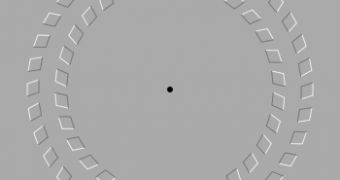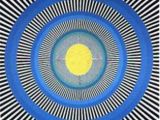For quite some time now, researchers believed that visual and optical illusions originated in the brain and were a result of the fact that the brain misinterpreted the nervous signals sent forth by the eyes. But now, scientists working with the Barrow Neurological Institute, at St. Joseph's Hospital and Medical Center, managed to prove that imperceptible eye motions are actually responsible for at least a part of the illusions.
"We have discovered that this illusion originates with eye movements and not solely the brain as previously thought. The findings from the study could help design future prosthetics for patients with brain damage or brain lesions that affect the perception of motion," explained the director of the Laboratory of Visual Neuroscience, Susana Martinez-Conde, PhD.
In the study, participants were shown the Enigma illusion, and their eyes were carefully surveyed with highly-sensitive video cameras. Later playbacks revealed that microsaccade – unconscious eye movements that take place on a very small scale – are directly responsible for the way the brain perceives images, when people look at optical illusions.
Just before the image seemed to speed up, researchers noted that microsaccade frequencies increased significantly, and that they also decreased when the illusion decelerated. This research puts an end to other theories, which attributed these distorted perceptions to brain activity only.
In the future, this study could be put to practical use, in the development of medical devices aimed at people whose damaged brains cannot properly discern motion. Their quality of life could improve drastically, as would their ability to see normally.
The current research was conducted on the Enigma optical illusion by a team of researchers composed of Laboratory of Behavioral Neurophysiology director Stephen Macknik, PhD, Susana Martinez-Conde, Xoana G. Troncoso, PhD. Jorge Otero-Millan also contributed. You can test the effects of the illusion for yourselves, in the image to the left.

 14 DAY TRIAL //
14 DAY TRIAL // 
